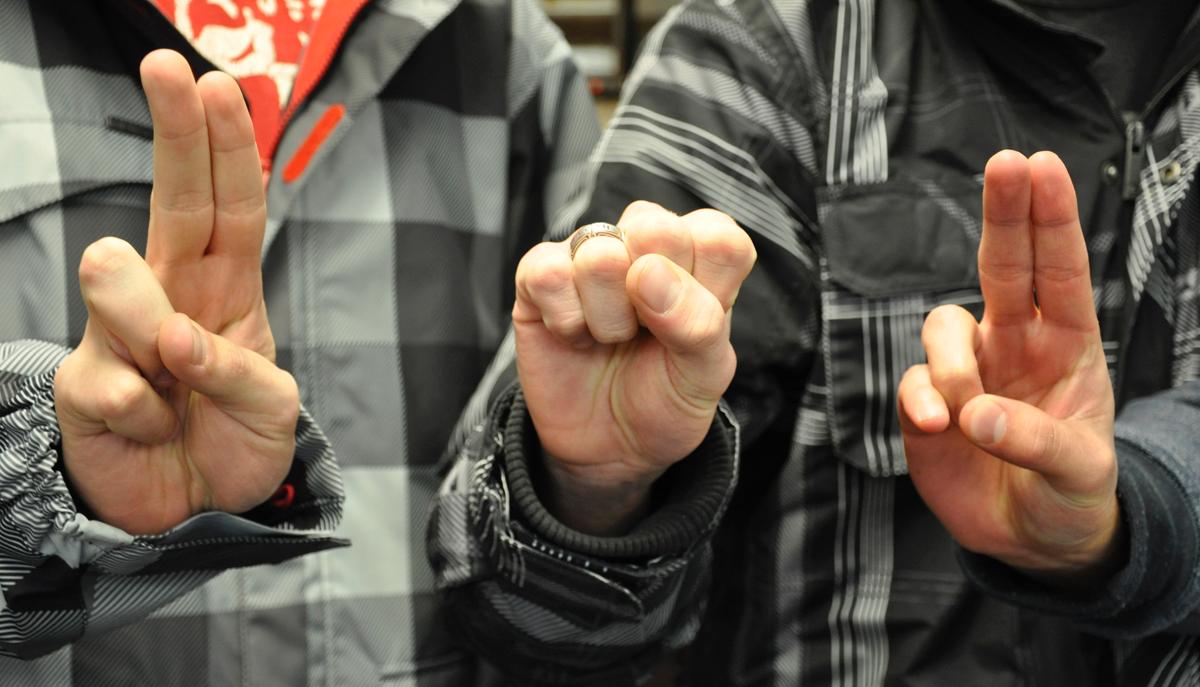Spreading the message without hearing a word
Deaf students and professors face a unique challenge in their day-to-day lives in overcoming common perceptions. Most assume that challenge has to do with the fact that they cannot hear like the majority of the world. While their deafness is a factor, the main problem they face is how other students and society view that deafness.
“Stereotypes are damaging,” said James Smith, current president of the Deaf Education Student Association, or DESA. “Assuming that deaf people are missing something, lead sad lives, can’t do many things, need help, are incorrect perceptions that are damaging.”
Keeping a positive attitude is central to dealing with any type of disability.
“Our happiness and success is not related to our ability to hear and speak,” Smith said. “Our happiness and success is based on the same things that they are for hearing people. We desire to have an equal education and equal opportunities.”
Smith is deaf and, as president of DESA, gets to see first hand some of the misconceptions hearing people have toward the deaf. His position and influence allow him to correct some of those misunderstandings and educate others about deaf culture.
According to the official DESA website, “DESA is a place where future teachers and professionals who work with deaf people may gain opportunities to interact with professionals already in the field.”
DESA also educates the public about the deaf community through activities and mini-workshops.
“The general perception of hearing people is ‘deaf people can’t’ or ‘deaf people can’t unless we help them to hear and speak – to be like us,'” Smith said. “DESA provides a service by educating hearing people to the deaf view. We provide workshops so that professional teachers and interpreters can gain the continuing education units necessary for their certification and so that students can get to know professionals in the field.”
Smith said DESA is an organization that brings both deaf and hearing people together with the purpose of building a network of understanding professionals. While hearing people have the benefit of speaking to one other as a means of communicating, deaf people rely on a different form of communication, ASL, or American Sign Language.
ASL is often looked at as a handicap or disadvantaged way of speaking, however, it is a fully formed language.
“Higher education is often a challenge for everyone, whether deaf or not,” Smith said. “Deaf people view themselves as an ethnic group similar to other cultural-based groups. They “speak” using American Sign Language, a language with a sophisticated linguistic structure, equivalent to spoken and written languages.”
Smith said ASL is the third most used language in North America and, not only is ASL a fully functioning language, it also has proven to help greatly with development in young children.
“Parents should recognize the benefit of signing with young children, whether hearing or deaf, but especially deaf children,” said Jan Kelley-King, adviser to DESA. “It gives them so many advantages and allows them to be bilingual.”
Smith said the deaf are involved in almost every aspect of the community.
“It is fun to watch the language in action all around you,” he said. “Young children who come with their parents, babies signing as young as 8 months of age, 2-year-old’s reading a book… pointing to the words and pictures and signing it in ASL.”
Smith does not believe the deaf should be handicapped by anything in life.
“We want to send the message that deaf people want access to everything, and young deaf children deserve access to everything,” he said. “In the deaf community we do not see limitations, we see opportunities and we want to partner with hearing people to help them understand that desire. We are not broken, we are deaf.”
– jess.wallace@aggiemail.usu.edu

